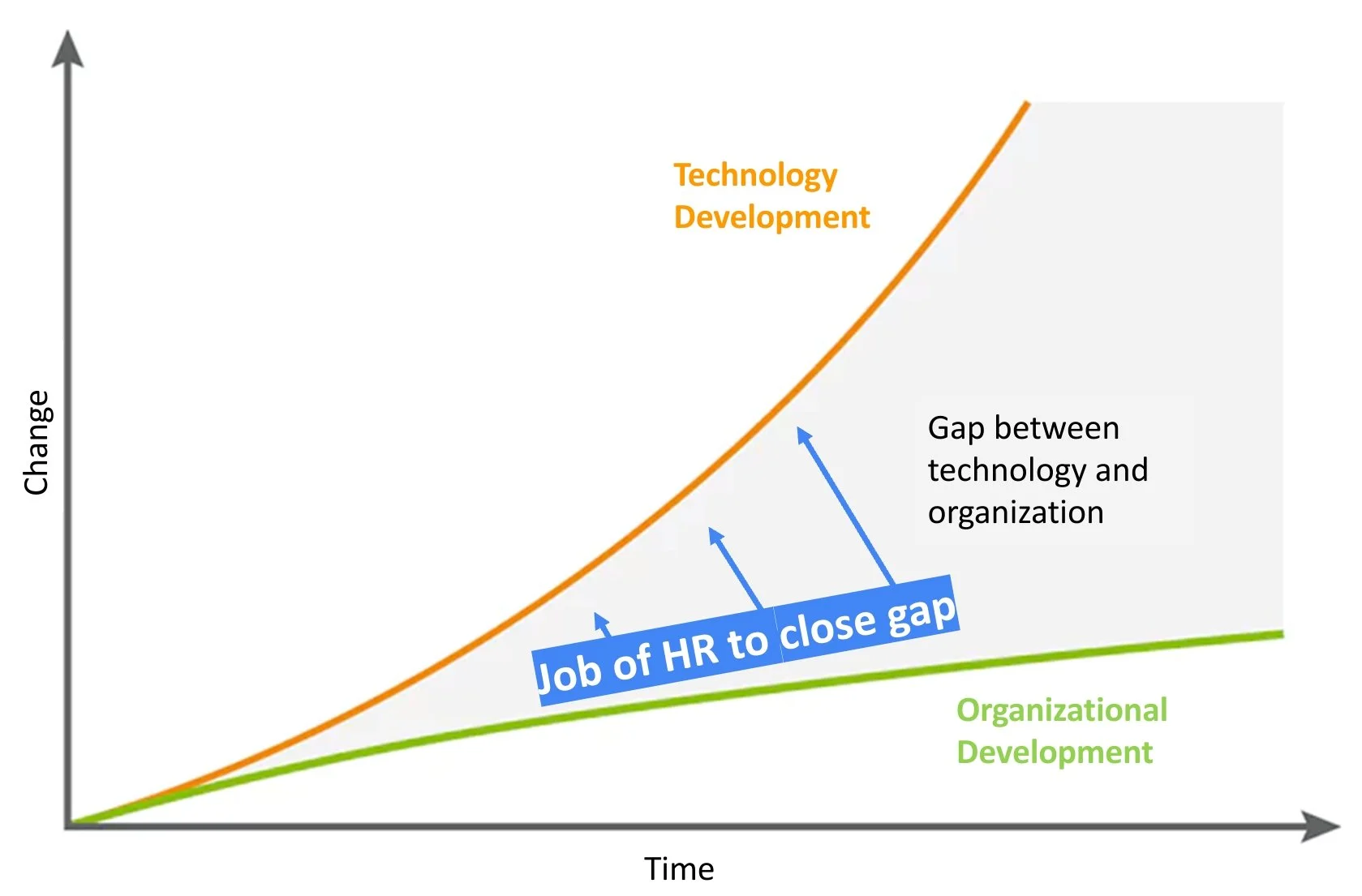Martec's Law
Martec's Law, coined by Scott Brinker, observes that technology advances exponentially, while organizations adapt at a much slower, logarithmic pace. This creates a widening gap, where the rapid development of new technologies outpaces an organization's ability to effectively integrate and utilize them. This is where leaders steps in, playing a crucial role in bridging this divide.
A Leadership Job: Bridging the Gap
One of the most critical functions in the modern age is to help organizations effectively navigate this technological landscape. This involves not only understanding the technology itself but also, more importantly, facilitating the necessary organizational changes to leverage its full potential. People leaders need to be strategic partners, aligning people, processes, and structures with the new technological realities. Here are some key strategies to effectively close the gap between technology and organizational structure:
Understanding the Technology: Have a solid understanding of the technologies being implemented, their potential impact on the workforce, and the skills required to use them effectively. This may involve collaborating with IT departments, attending industry events, or engaging in continuous learning.
Workforce Planning: Proactively assess the impact of new technologies on job roles and skills. This includes identifying potential skill gaps, forecasting future workforce needs, and developing strategies for upskilling or reskilling employees.
Change Management: Implementing new technology often requires significant organizational change. Play a vital role in managing this change, ensuring smooth transitions, and addressing employee concerns. This involves clear communication, training, and support to help employees adapt to new ways of working.
Talent Acquisition: Attract and recruit talent with the skills necessary to thrive in a technologically driven environment. This may involve updating job descriptions, leveraging new recruitment channels, and focusing on candidates with digital literacy and adaptability.
Learning and Development: Create a culture of continuous learning, providing employees with opportunities to develop their skills and stay up-to-date with the latest technologies. This can include online courses, workshops, mentorship programs, and on-the-job training.
Organizational Design: Ensure that the organizational structure is aligned with the new technologies and supports efficient workflows. This may involve redesigning roles, creating cross-functional teams, or implementing agile methodologies.
Employee Engagement: Foster a culture of innovation and empower employees to embrace new technologies. This can involve encouraging experimentation, recognizing and rewarding innovation, and providing platforms for employees to share ideas.
Organizational Change
Many Leaders find it challenging to keep pace with current trends. This isn't necessarily a failing on their part, but rather a reflection of the inherent dynamics at play. Leaders who aren't feeling stretched thin are likely either overlooking important trends or resisting necessary organizational adaptation. The core issue is the widening gap between technological advancement and organizational evolution. We're in the midst of a work revolution driven by artificial intelligence and automation. Technology is advancing exponentially, while organizations and their employees adapt at a more linear pace. This creates a significant challenge. The crucial task for Leaders is to minimize this gap, enabling organizations to adapt and remain competitive. This tension is particularly pronounced right now, given the rapid pace of technological change. Therefore, HR professionals grappling with these challenges shouldn't be seen as a sign of weakness, but rather as an indication that the organization is actively working to enhance its competitiveness.


